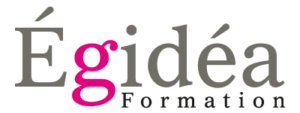
If the asset account had a credit balance or the contra asset account had a debit balance, this would indicate an error in the journal entries. Contra assets are still recorded along with other assets, though their natural balance is opposite of assets. While assets have natural debit balances and increase with a debit, contra assets have natural credit balance and increase with a credit. The second method of estimating the allowance for doubtful accounts is the aging method.
Accounts Receivable Aging Method
To account for potential bad debts, you have to debit the bad debt expense and credit the allowance for doubtful accounts. The allowance method journal entry takes the estimated amount of uncollectible accounts and establishes the allowance as a contra-asset, so it can either be zero or negative. With the allowance for doubtful accounts is a contra asset account that equals: this method, accounts receivable is organized into categories by length of time outstanding, and an uncollectible percentage is assigned to each category. For example, a category might consist of accounts receivable that is 0–30 days past due and is assigned an uncollectible percentage of 6%.

Allowance for doubtful accounts journal entry
It ensures your company’s financial stability, preventing disruptions in case customers don’t pay. It is a preventive measure and helps you represent your financial records accurately. Another approach is the percentage of https://www.bookstime.com/ receivables method, which focuses on the outstanding accounts receivable at the end of a period. This method involves applying different percentages to receivables based on their age, as categorized in the aging schedule.
Everything You Need To Build Your Accounting Skills
The allowance for doubtful accounts is management’s objective estimate of their company’s receivables that are unlikely to be paid by customers. By analyzing such benchmarks, businesses can make informed decisions about their approach to managing their accounts receivable and avoiding potential financial losses. Companies create an allowance for doubtful accounts to recognize the possibility of uncollectible debts and to comply with the matching principle of accounting.
- Contra accounts act like regular accounts on the balance sheet but have a unique purpose.
- As of January 1, 2018, GAAP requires a change in how health-care entities record bad debt expense.
- Estimating doubtful accounts is a nuanced process that requires a blend of historical data analysis, current economic insights, and industry-specific knowledge.
- Last, for contra revenue accounts there are sales discounts, sales allowances, or sales returns.
- Deskera Books is an online accounting, invoicing, and inventory management software that is designed to make your life easy.
- Adjusting the allowance for doubtful accounts is important in maintaining accurate financial statements and assessing financial risk.
How to Calculate Allowance For Doubtful Accounts (3 ways)
An allowance for doubtful accounts is a deduction that allows the company to keep track of bad debt. In the percentage sales method, the company assigns a flat percentage to estimate the amount for the accounts receivable for the given accounting period. Businesses that offer their goods or services on credit to their clients initiate and set up doubtful accounts to ensure that accounts receivables are accurate in the balance sheet. Accountants and managers also make use of the doubtful accounts to make a note of the payments that are still in their collectibles’ list. Understanding trends in doubtful accounts can provide valuable insights into a company’s financial health and operational efficiency.
What Is an Allowance for Doubtful Accounts (Aka Bad Debt Reserve)?
For example, if a piece of heavy machinery is purchased for $10,000, that $10,000 figure is maintained on the general ledger even as the asset’s depreciation is recorded separately. Ideally, you’d want 100% of your invoices paid, but unfortunately, it doesn’t always work out that way. According to recent research by Dun & Bradstreet, publishing, commercial printing, and prepackaged software providers are among the industries most likely to report uncollectible invoices. Download our customer success story to find out how Staples reduced their bad debt by 20% with automation and AI.
- That is to completely or partially offset the balance of their related asset accounts.
- In this method, you are required to group all outstanding receivables by age and, then, allocate different percentages to each group.
- The customer has $5,000 in unpaid invoices, so its allowance for doubtful accounts is $500, or $5,000 x 10%.
- Though this allowance for doubtful accounts is presented on the balance sheet with other assets, it is a contra asset that reduces the balance of total assets.

Is the allowance for doubtful accounts a debit or credit?




Leave a Comment